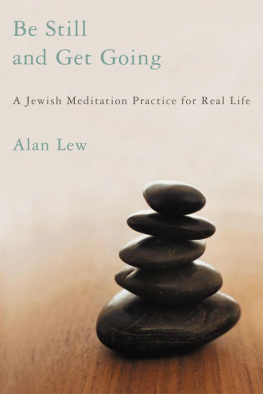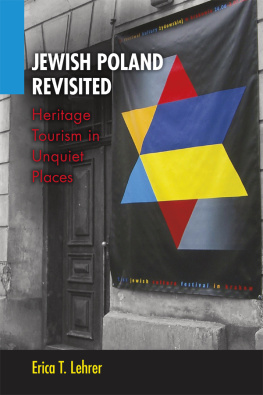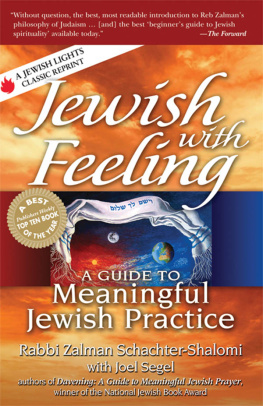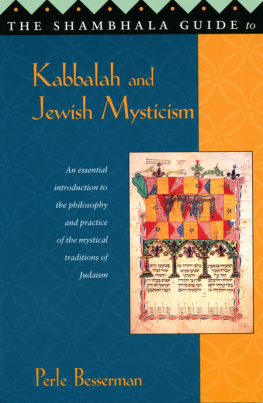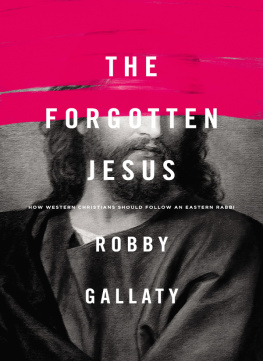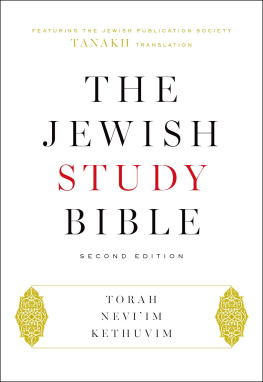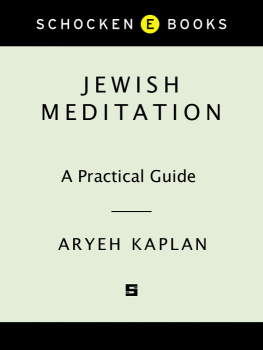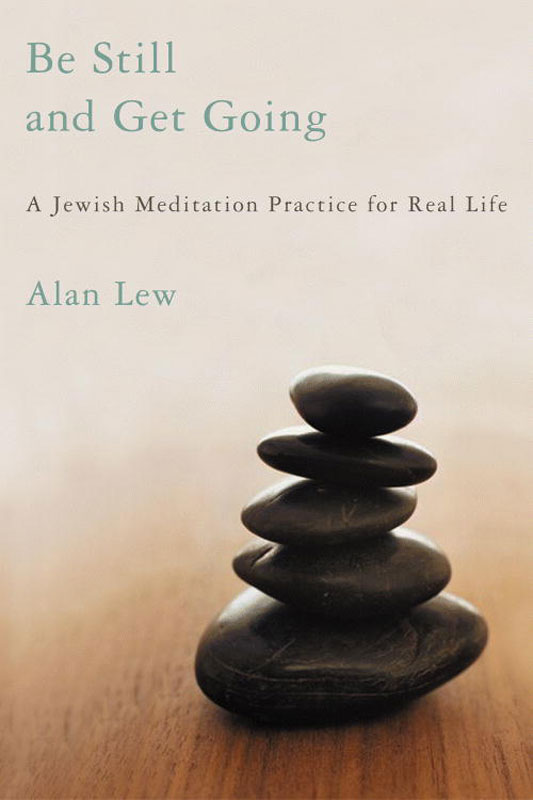COPYRIGHT 2005 BY ALAN LEW
ALL RIGHTS RESERVED. NO PART OF THIS BOOK MAY BE REPRODUCED IN ANY FORM OR BY ANY ELECTRONIC OR MECHANICAL MEANS, INCLUDING INFORMATION STORAGE AND RETRIEVAL SYSTEMS, WITHOUT PERMISSION IN WRITING FROM THE PUBLISHER, EXCEPT BY A REVIEWER WHO MAY QUOTE BRIEF PASSAGES IN A REVIEW.
LITTLE, BROWN AND COMPANY
HACHETTE BOOK GROUP USA
237 PARK AVENUE, NEW YORK, NY 10017
VISIT OUR WEB SITE AT www.HachetteBookGroupUSA.com.
FIRST EBOOK EDITION: AUGUST 2005
ISBN: 978-0-316-02591-1
8 Monologs (poems), 1980
One God Clapping:
The Spiritual Path of a Zen Rabbi
(with Sherril Jaffe), 1999
This Is Real and You
Are Completely Unprepared:
The Days of Awe as a Journey
of Transformation, 2003
For Zoketsu Norman Fischer
Ancient Friend, Fellow Traveler
But Moses said to the people, Dont be afraid. Collect yourselves and see the salvation which Adonai will make for you today.... Adonai will fight for you and you will be still. Then Adonai said to Moses, Why do you cry out to me? Tell the Israelites to just get going.
EXODUS 14:13-15
The Treasure in the Oven
SOMETIMES WE CAN LEARN MORE FROM THE MISREADING of a story than we can from the story itself. So it is with the oft-told Yiddish tale about Azyk, the son of Reb Yekl of Cracow. Azyk dreamed one night that he saw a great treasure hidden under the Praga side of the Warsaw bridge. So he woke up early the next morning and went to Warsaw. When he got to the bridge, he wanted to go to the spot where he had dreamed the treasure was hidden, but there was a watchman standing guard there. Azyk paced back and forth on the bridge all day long and into the night, but the watchman never budged. In fact he finally became aware of Azyk and his pacing, so he approached him and asked him what he was doing there. Azyk told him the truth. He had come to the Warsaw bridge because he had dreamed the night before that a treasure was hidden there. Thats funny, the watchman said, I dreamed of a great treasure last night too, only this one was hidden in the oven of a house belonging to a man named Azyk, the son of Reb Yekl of Cracow. Astonished, Azyk turned right around and went home, and sure enough, when he opened his oven door, he found a great treasure there and became a very rich man.
Its true, of course, as this story suggests, that we often look far afield for the things we value most, when they are usually found close to home, but this story makes a number of other important points as well. Azyk has the courage to follow his dream, and the wisdom not to give up on it even when it seems to have carried him in the wrong direction. And he is open enough to learn from the dream of another, even when it comes from a different people and a different religious tradition, in this case the non-Jewish watchman.
But in recent years this story has been toldand more important, mistoldto make a very particular point. In all the versions of this story I have heard over the last twenty years, the treasure was hidden not in Azyks oven, but rather beneath his house, and these versions of the story usually end with Azyks digging up the buried treasure. There is a reason for this recasting of the story; it is usually told as an object lesson for the many Jews who have turned to other religionsto Buddhism, to Hinduism, and othersfor spiritual gratification. The story is invoked to say to them, Look, you have a great treasure buried beneath your own house. Youve followed your dream of spiritual riches far and wideall the way to the Warsaw bridgebut the treasure has been hidden beneath your own house all this time. Why travel elsewhere? Why travel far and wide, when all you have to do is dig up the treasure that has been beneath your own house all the while?
Why the change in the ending of the story? I am convinced that it is because in this analogy the treasure buried beneath the house represents Kabala, the esoteric, mystical branch of Judaism, and the secret or buried teachings, the ones that have to be dug up. The people who tell this version of the story are saying, in effect, You dont need Buddhism, you dont need Yoga, you dont need meditation; you have Kabala, a treasure buried right in your own backyard!
But in the original version of the story, the treasure is not buried beneath the house. It is not a secret. It is hidden in the oven, in the kitchen, in the most frequently used room in the house. It is hidden in plain sight. It doesnt need to be dug up at all. All one has to do is go to the most obvious, least exotic place in the house and simply open the door. In my opinion this story reflects our spiritual reality much more precisely than the altered version.
There is an open secret embedded in the sacred literature of Judaism. This literaturethe Torah, the Hebrew Bible, the Talmud, Midrash, Kabala, and the Teachings of the Hasidic Mastersis generally read as the wellspring of Jewish communal values and religious observance. But there is a much deeper and more universal message sitting right in plain view, on the surface of these textsa message largely unseen for the three thousand years of their existence. If one knows what to look for, the classical sources of Judaism offer a trenchant guide to spiritual practice. The striking thing is that we find this guidebook not only in the esoteric teachings of Judaism, where we might expect to find them, but also right in front of our faces in some of Judaisms most familiar materialin the well-known stories and teachings of the Torah and the Talmud. In other words, we find these teachings not buried beneath the house, but right in the middle of it, right in the kitchen, in the most obvious place of all, where anyone could find them.
At Makor Or, the meditation center I established in San Francisco at the turn of the millennium with my dear friend Norman Fischer, we have emphasized the considerable spiritual power of traditional, normative Jewish practiceprayer, Torah study, and a deep immersion in the Sabbathand the equally impressive capacity of mindfulness meditation to open us to this power. The practice we have developed at Makor Or is not based on dubious re-creations of Kabalistic meditation practices that may or may not have ever existed, but rather on the rock-solid certainty of two intact traditionsmindfulness meditation and normative Judaism.
Most contemporary experiments in Jewish meditation or spirituality have relied heavily on Kabala. At Makor Or we have tended to shy away from Kabala for a number of reasons. First of all, almost all the Kabalistic texts that we have in our possession speak primarily about the fruits of Kabala. They describe the mystical states to which Kabala transports us in vivid detail, but for the most part the journey itself is missing. The nuts and bolts of Kabalistic practice are never found in these texts. These practices were rarely reduced to writing; rather they were handed down person to person by an unbroken chain of teachers. One of the overlooked consequences of the Holocaust is that this chain was largely broken. Most of the major teachers of Kabala still lived in Europe at the time of the Holocaust, and in far too many cases the techniques and practices they bore in their person perished when they did.
Contemporary teachers of Kabala have often engaged in speculative attempts to reinvent Kabalistic practices, or to give Kabalistic subtitles to meditative practices they learned elsewhere, particularly from Tibetan and Vipassana Buddhism. It has become increasingly clear over the past several decades that what is really essential in spiritual work is the daily, disciplined practice of spiritualitynot the highs we might experience at a weekend retreat or a workshop or a hike at Yosemite, but the essential work of connecting ourselves to the transcendent every day of our lives.

